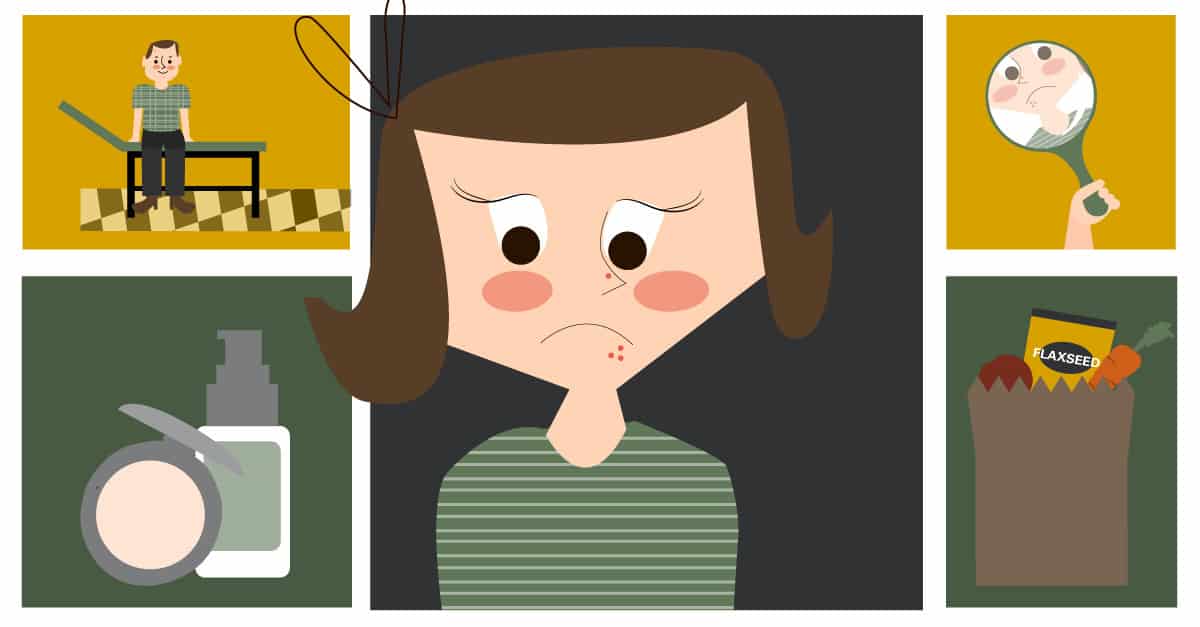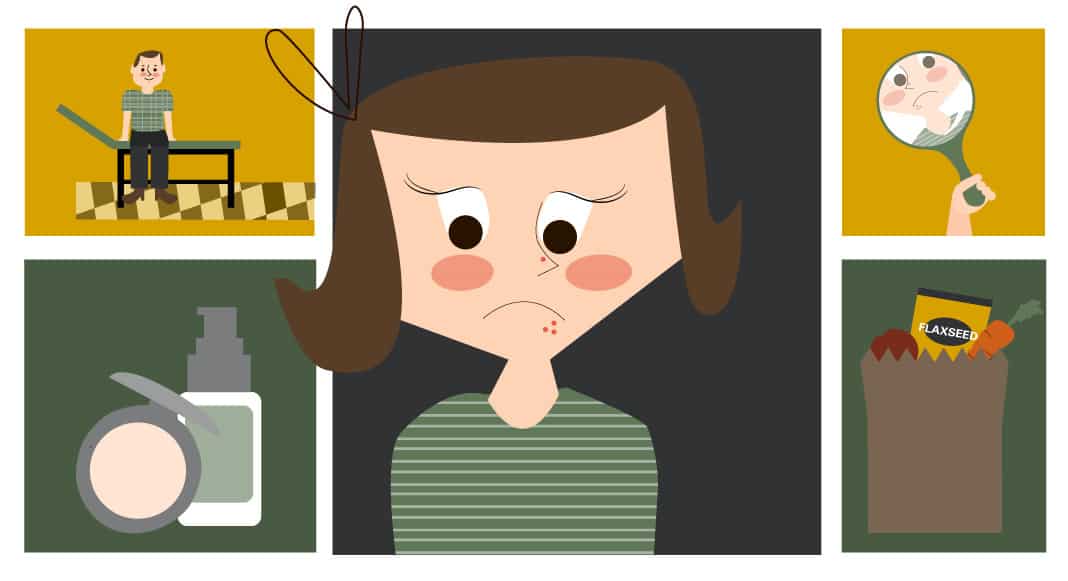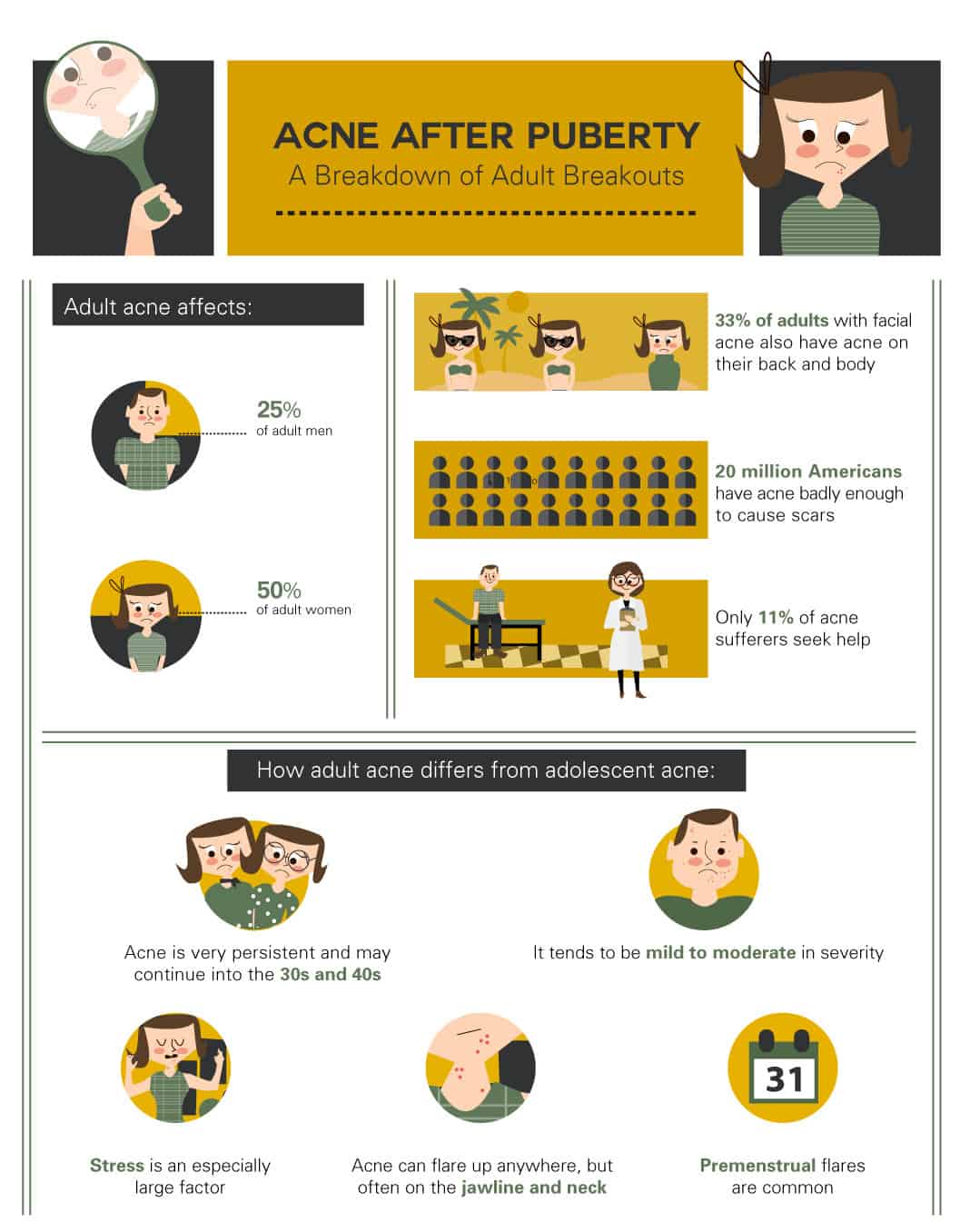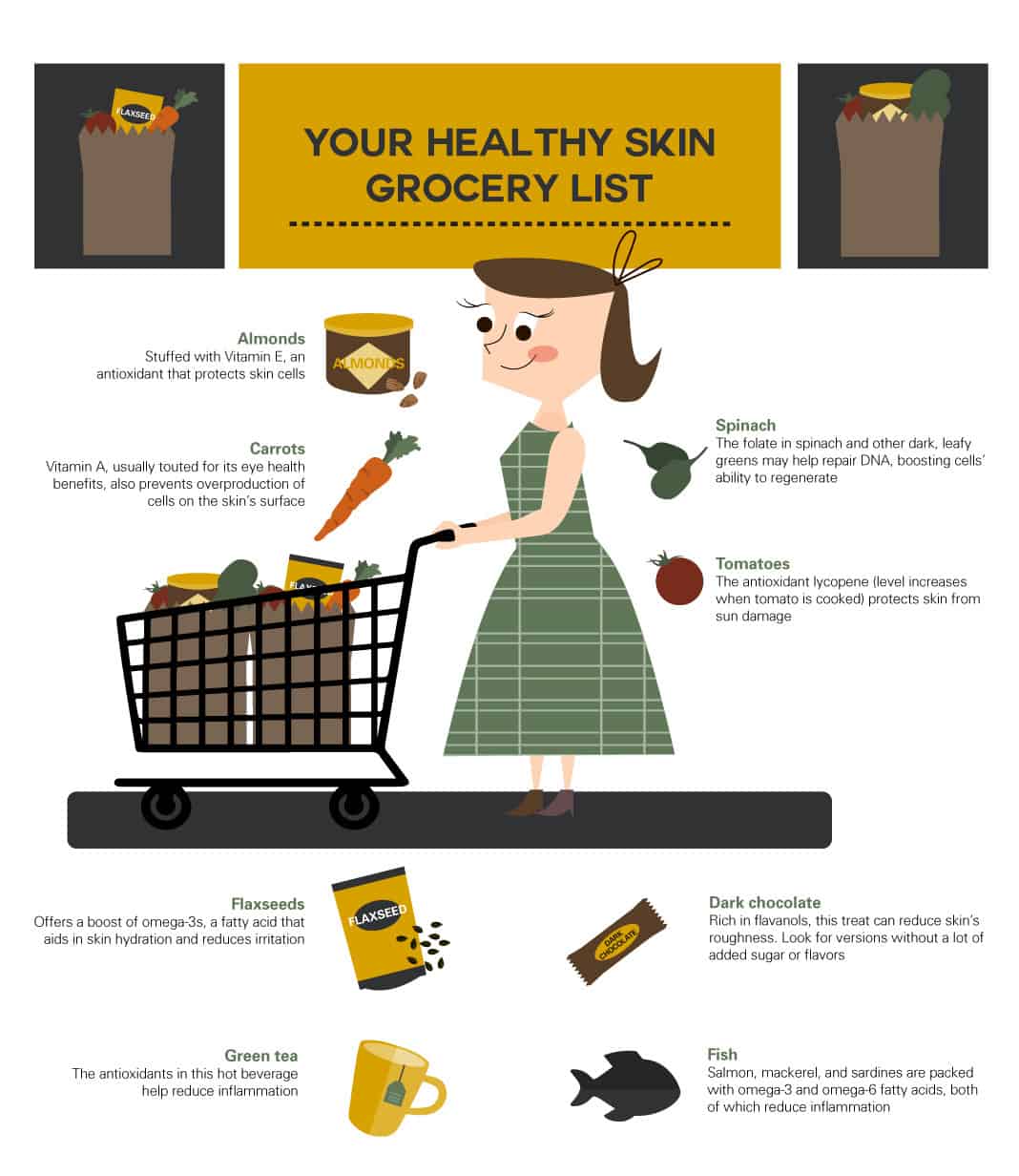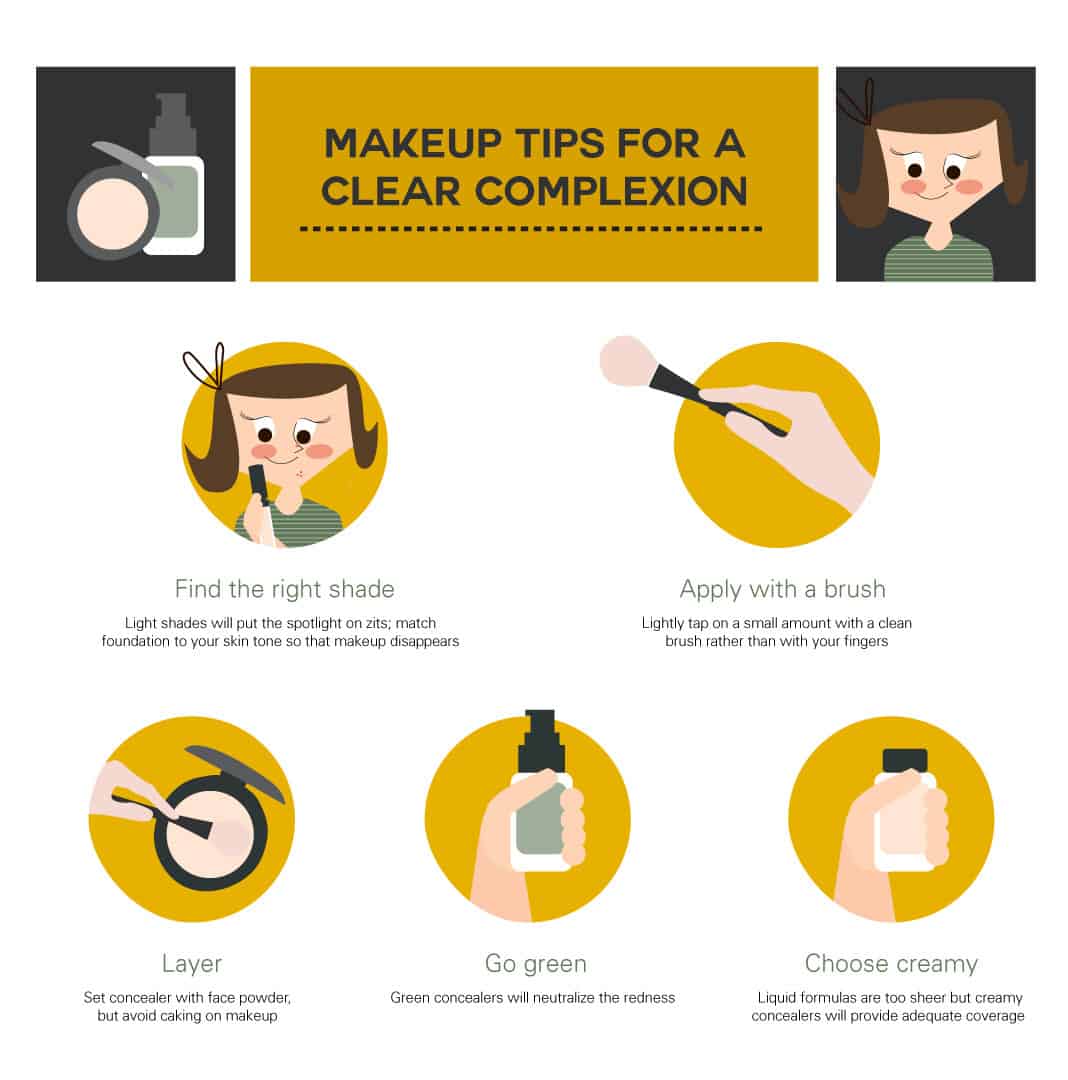Learn what it is and how to get rid of it.
Teenagers aren’t the only ones who wake up with embarrassing pimples. Although acne has long been associated with the braces and greasy skin phase, it’s a common problem for adults too. But that doesn’t mean you need to hide your face! We break down the causes of adult acne, ways to prevent it, and how to treat it to get a clear complexion.
What It Is
Similar to teenage acne, pimples form from blocked pores that allow bacteria and dirt to build up. But acne later in life may show up in different places: Instead of the T-zone (forehead and nose), blemishes may appear on the jawline, chin, and neck. Sebum production, or excess oil, is one of the main catalysts for breakouts. When testosterone levels rise, the sebaceous glands kick into overdrive, causing flare-ups. While these overactive glands are common during puberty in boys and girls, they continue to work overtime in women because of menstrual cycles, pregnancy, menopause, and birth control.
Who Suffers from It
Adult acne is more common in women than men because women often experience more fluctuating hormone levels. But not every pimple can be blamed on menstruation. Poor diets and stress can also cause breakouts. Past research concluded chocolate was not associated with acne, but more recently, researchers found a connection between food and breakouts, especially foods with a high glycemic index. Junk food isn’t the sole culprit, but not eating a balanced meal can add fuel to the acne fire.
If you’re an adult with acne, you’re not alone. [Tweet “A 2012 study found acne affects nearly half of all women between 21 and 30”]A 2012 study found acne affects nearly half of all women between 21 and 30, a quarter of women between 31 and 40, and 12 percent of women between 41 and 50. Even those who never experienced acne in their teen years can develop it later on.
The causes of flare-ups can depend on your age range:
In Your 20s
Typically excess oil is to blame.
In Your 30s
Pores get clogged from dead skin cells as skin-cell turnover slows.
In Your 40s
Estrogen levels drop, causing testosterone to take over. Skin is thinner and more prone to bacteria.
Treatment
Switch up your products
Using the same acne products from your teenage years may do more harm than good. The majority of acne products are intended for young, durable skin and contain high percentages of benzoyl peroxide and salicylic acid—typically 10 percent and 2 percent. As we age, skin becomes thinner and these ingredients burn, sting, and cause dryness. (Most people in their 20s can handle the maximum strength.) Instead, look for products with 2.5 percent benzoyl peroxide or .5 percent salicylic acid, which will be just as effective.
Less is more, so avoid layering products with irritating ingredients, such as a cleanser, lotion, and topical medication. Wash your face morning and night with a cleanser containing benzoyl peroxide or salicylic acid but reduce to once daily if excessive dryness occurs. Remember to slather on SPF in the morning because zit-zapping ingredients can heighten skin’s sensitivity to the sun. If skin is irritated, apply tea tree oil, a natural ingredient that can fight mild to moderate breakouts by reducing bacteria. A lotion with retinoid will also combat acne by smoothing lines and preventing dead skin cells from blocking pores. And don’t forget to moisturize even if you have oily skin. Dry skin will produce more pore-clogging oil, so apply a light moisturizer morning and night to rehydrate.
Put on a mask
If oily skin is an issue, try a mask at night to unclog pores and soak up excess oil. Masks with charcoal or clay help absorb oil while salicylic acid exfoliates pores as it dries. (Just remember to rinse it off before it completely dries so the acid doesn’t pull out too much hydration.) If redness and inflammation is more of the problem, try a calming mask with chamomile to reduce irritation. Use a mask one to three times a week and take advantage of the drying time to relax and de-stress.
Stress less
It doesn’t take a midlife crisis to cause a breakout. Small amounts of stress can trigger an increase in cortisol, also known as the stress hormone, which leads to more oil production. The first step to reducing stress is figuring out the root cause, whether it’s at home or at the office. Then tackle ways to relieve that stress. Along with the right skin regimen, keeping stress at bay will help reduce the occurrence of pimples.
Work toward getting more sleep (about eight hours) to reduce cortisol and allow skin to rejuvenate. Lastly, make time for daily exercise, which has a calming effect by boosting circulation and producing endorphins. Sweating at the gym doesn’t cause acne, although it can foster bacteria buildup, so make sure to shower within 30 minutes after a workout and wear cotton instead of Lycra or nylon to absorb sweat.
Watch the junk
You don’t have to give up chocolate and potato chips altogether, but reducing junk food and incorporating healthy foods can reduce breakouts. First, work to cut down on processed carbohydrates, such as white bread and pasta. Starchy foods raise blood sugar and boost hormones, so swap them for whole grains and veggies. Those who eat more dairy products and unhealthy fats are also more likely to suffer from acne. While there’s little research indicating why, studies show more women are reporting adult acne. One possibility could be an influx of hormone-enhanced food (including dairy). When possible, eat organic produce and meat.
Consider an oral contraceptive
For women who experience breakouts about a week before their period, a doctor can prescribe a birth control pill to help stabilize hormone levels, resulting in clearer skin. As women age, estrogen drops, leading to increased sebum. Many birth control pills counteract this process by raising estrogen levels. Going on and off the pill can cause skin problems, so ask your doctor before sending hormones on a rollercoaster ride.
See a dermatologist
If over-the-counter products aren’t cutting it or you’re experiencing severe acne, visit a dermatologist to determine an effective treatment. They may prescribe topical medicines that contain retinoid (it boosts collagen to fill scars) or antibiotics to kill bacteria. Other treatments include chemical peels (glycolic acid peels are proven to treat acne) and laser therapy. Though they are a more expensive option and require several sessions, lasers can quickly zap zits and reduce redness, inflammation, and scarring.
Prevention
Wash your sheets
[Tweet “Maintaining a balanced diet, washing your face day and night, and reducing stress are three key factors in preventing breakouts. “]Maintaining a balanced diet, washing your face day and night, and reducing stress are three key factors in preventing breakouts. But smaller changes may have an affect on those pimples too. Even if you wash your face religiously every night, how often do you wash your pillowcase? Hair products and natural oils collect on pillows while we sleep, so going weeks without washing allows products and bacteria to build up. When your face hits the pillow at night, it’s subject to all that grime which can clog pores. If you’re prone to frequent breakouts, wash pillowcases every few days and avoid fabric softener, which leaves a pore-clogging waxy residue.
Don’t pop
Think about how many times your hands touch your face like resting your chin on your hand at the office. Wash hands frequently and avoid touching your skin to prevent the transfer of bacteria. While it’s tempting, never pop a zit because it can worsen the infection, causing more pimples and scarring. Let a topical medication do the work instead.
Wear sunscreen
Have you ever noticed how a little time in the sun can reduce flare-ups? That’s because sunlight reduces inflammation, but over time sun exposure will break down the skin’s collagen, which is what helps maintain skin firmness. Pores will lose support, causing more blackheads to appear. Sun damage makes repairing skin more difficult, so slap on SPF before heading outside.
Whichever method you choose to achieve a clear complexion, remember it takes time and doesn’t happen overnight. Stick to a daily regimen of cleansing and hydrating, but avoid switching products frequently since it can take up to a month for a new product to start working. If no OTC products do the trick, see a dermatologist for more options.
